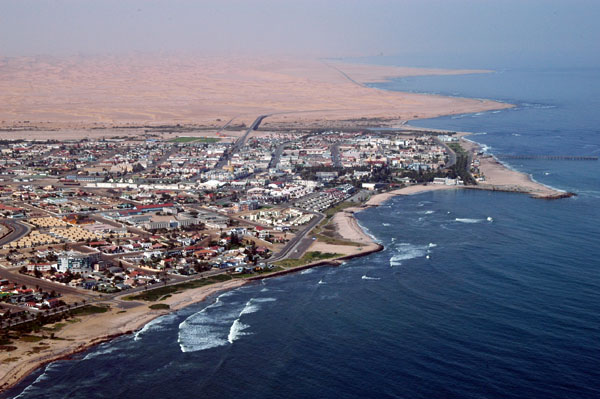Namibia, located in southwestern Africa, is a country known for its striking landscapes, rich cultural diversity, and unique demographic shifts. Over the past seven decades, Namibia has experienced significant changes in its population, with trends that have shaped its social, economic, and political landscape. From its modest population size in 1950 to its more than 2.7 million people today, Namibia’s population growth reflects broader trends in fertility, mortality, migration, and urbanization. This article explores the population boom in Namibia since 1950, examining key factors that have contributed to this growth and what the future holds for the country’s demographics.
1. A Modest Beginning: Namibia’s Population in 1950
In 1950, Namibia’s population was relatively small, estimated at just around 600,000 people. At the time, Namibia was under South African administration, and the country’s population was predominantly rural. The 1950s marked a period of colonial control, where political and social structures were shaped by apartheid-era policies. These policies restricted the movement of the indigenous population, focused on labor extraction, and enforced racial segregation, all of which influenced the demographic trajectory of the country.
Despite these challenges, Namibia’s population began to grow steadily, albeit at a slower pace due to high mortality rates, particularly among indigenous populations who faced inadequate access to healthcare, education, and economic opportunities. The country’s demographic landscape in the 1950s was marked by a predominantly young population, with high fertility rates and low life expectancy, especially among black Namibians.
2. Fertility Rates and the Impact on Population Growth
Fertility rates have played a major role in shaping Namibia’s population over the decades. In the 1950s and 1960s, Namibia had a high fertility rate, averaging about 6.5 children per woman. This was consistent with many African countries at the time, where large families were common, partly due to the lack of access to modern contraception, high infant mortality rates, and traditional cultural norms that favored large families.
As Namibia moved into the 1970s and 1980s, the fertility rate began to show signs of decline. By the late 1980s, the average number of children per woman had decreased to 5.0. This decline can be attributed to several factors, including better access to family planning, increased urbanization, and improvements in education, particularly for women. By the 2000s, Namibia’s fertility rate continued its downward trend, reaching about 3.0 children per woman, reflecting the broader demographic shifts happening across the African continent as family sizes began to decrease.
The 2022 census indicated a further decline in Namibia’s fertility rate, with the total fertility rate (TFR) now at 2.7 children per woman, which is closer to the replacement level of 2.1 children per woman. This decrease is a significant change from the high fertility rates observed earlier in the country’s history and signals the transition of Namibia into a phase of slower population growth in the coming decades.
3. Life Expectancy and Mortality Rates
Life expectancy in Namibia has seen a substantial increase since 1950. In the early years, life expectancy was relatively low due to poor healthcare infrastructure, high infant mortality, and limited access to medical services, especially in rural areas. In the 1950s, life expectancy was estimated to be around 40 years, which was common for many African countries at the time.
However, life expectancy began to rise in the late 20th century, particularly after Namibia gained independence in 1990. With the establishment of a more equitable healthcare system, improved sanitation, and increased access to modern medicine, life expectancy increased significantly. By the early 2000s, life expectancy had risen to around 60 years.
The HIV/AIDS epidemic in the late 1990s and early 2000s caused a temporary decline in life expectancy in Namibia, with the country experiencing one of the highest HIV infection rates in Africa. However, Namibia’s successful response to the epidemic, which included expanded access to antiretroviral treatments and public health campaigns, helped reduce HIV transmission rates. As a result, life expectancy has steadily recovered and reached around 64 years in recent years.
This improvement in life expectancy has contributed to the overall population growth as more people are living longer, and the proportion of elderly individuals in the population has gradually increased.
4. The Role of Urbanization in Population Growth
One of the most significant changes in Namibia’s demographic landscape since 1950 has been the rapid growth of urban populations. In 1950, nearly 90% of Namibia’s population lived in rural areas, with limited access to modern amenities such as electricity, running water, and healthcare. The majority of the population engaged in agriculture or pastoralism, and many lived in traditional homesteads.
However, in the latter half of the 20th century, particularly after Namibia’s independence in 1990, the country began to experience significant urbanization. Cities such as Windhoek (the capital), Walvis Bay, Swakopmund, and Rundu became major urban centers, attracting people from rural areas in search of better employment opportunities, education, and healthcare.
By the 2022 census, 54% of Namibia’s population was living in urban areas, compared to just 10% in 1950. This urbanization trend has contributed to the population boom, as cities continue to grow at a faster pace than rural areas. The migration to urban centers is driven by factors such as:
- Better Economic Opportunities: Cities offer better job prospects in sectors like manufacturing, services, and mining.
- Education and Healthcare: Urban areas provide more access to schools, universities, and healthcare facilities, which are key factors in improving the standard of living.
- Infrastructure Development: Better infrastructure in cities, such as roads, electricity, and clean water, attracts people from rural areas.
Urbanization has reshaped Namibia’s demographic profile, with young people particularly seeking the economic and educational opportunities available in cities. However, rapid urbanization also presents challenges, such as overcrowding, pressure on housing, and the need for better urban planning and public services.
5. Migration Patterns: Impact of Regional and International Migration
Migration has played a key role in Namibia’s population growth and distribution. Historically, Namibia has seen significant migration from neighboring countries due to political instability, economic opportunities, and environmental factors. Countries like Angola, Zimbabwe, and Zambia have contributed to Namibia’s population growth, particularly during times of regional conflict or economic hardship in these countries.
In addition to international migration, Namibia has also experienced internal migration from rural areas to urban centers. This migration is driven by the same factors as urbanization: better economic opportunities, education, and improved healthcare. The movement from rural to urban areas has led to a shift in the population distribution, with urban areas now home to more than half of Namibia’s population.
The influx of migrants, both from within and outside Namibia, has had significant social, economic, and political impacts on the country. While migration has contributed to population growth, it has also presented challenges in terms of resource allocation, housing, and job opportunities.
6. Demographic Challenges and the Future Outlook
Namibia’s population growth since 1950 presents both opportunities and challenges for the country. While the population boom has led to a more youthful and growing labor force, it also poses challenges in terms of economic sustainability, access to education, healthcare, and job creation. The growing population, coupled with the shift towards urbanization, places pressure on infrastructure, housing, and public services.
Key demographic challenges include:
- Youth Unemployment: Namibia’s large youth population faces high unemployment rates, particularly among urban dwellers.
- Aging Population: While Namibia is still relatively young, the proportion of elderly individuals is gradually increasing, which may put pressure on social welfare systems and healthcare services in the future.
- Rural Poverty: Despite urbanization, a significant portion of Namibia’s population still lives in rural areas, where access to services and economic opportunities remains limited.
In terms of future growth, Namibia is expected to continue experiencing gradual population increases, although the pace may slow as fertility rates decline. By 2050, Namibia’s population is projected to exceed 3.5 million people. Continued urbanization, improved healthcare, and economic diversification will be key factors in shaping the country’s demographic trajectory in the coming decades.
Namibia’s population growth since 1950 has been marked by dramatic shifts in fertility, mortality, urbanization, and migration patterns. The country’s population has grown from around 600,000 in 1950 to over 2.7 million today, driven by factors such as improved healthcare, better living standards, and increasing urbanization. As Namibia continues to grow, addressing demographic challenges such as youth unemployment, aging populations, and urbanization will be critical to ensuring sustainable development and improving the quality of life for its citizens.
With careful planning and strategic investments in education, healthcare, and infrastructure, Namibia can navigate the complexities of its population boom and build a brighter future for its people. The journey from 1950 to today has been transformative, and the next few decades will be equally crucial in shaping the nation’s demographic future.
Join 'Namibia Today' WhatsApp Channel
Get the breaking news in Namibia — direct to your WhatsApp.
CLICK HERE TO JOIN












